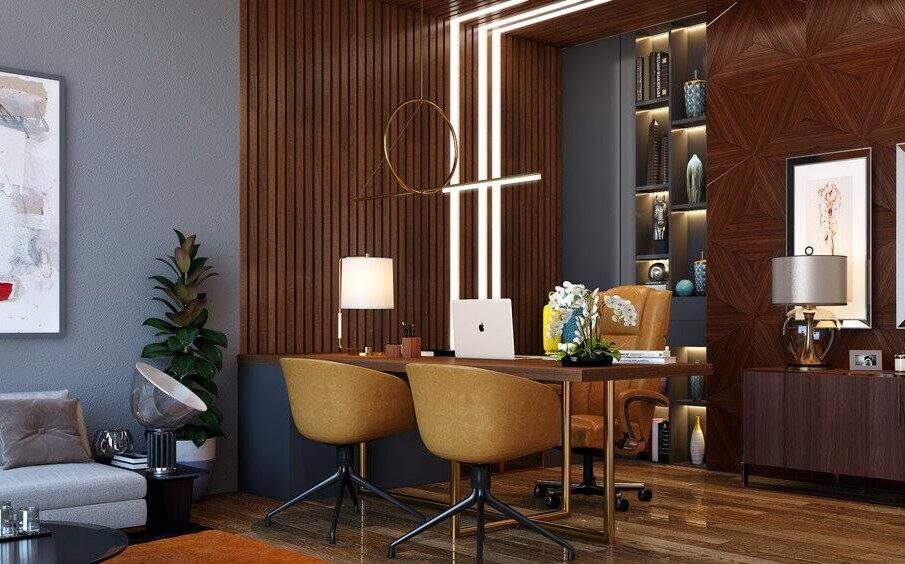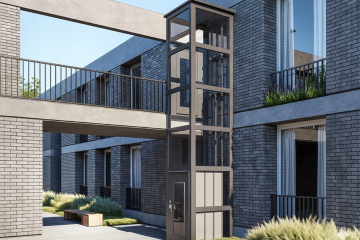Collaborating with an Interior Designer on a Budget

Despite the perception that hiring an interior designer is a luxury, working with a professional may be done on a budget with careful preparation and wise choices. These useful pointers can help you get the most out of your money without going overboard.
Set Clear Goals and Priorities
Assess the project’s scope before hiring an interior designer. Identify the areas that require attention and the precise results you hope to attain. If money is tight, concentrate on high-impact spaces like the kitchen or living room. Making aesthetics and usefulness a top priority in these areas guarantees you will receive the best return on your investment.
Explain your budget in detail right away. Be honest about your financial situation and the areas in which you are prepared to make concessions. That helps create a strategy that fits your budget. Interior designers value transparency because it enables them to provide economical solutions and allocate resources efficiently.
Choose the Right Designer
Not every designer works at the same cost. Look for experts whose fees fit within your means. Numerous designers provide a variety of packages, from full-service choices to more reasonably priced consultation-only services. Selecting an interior designer who focuses on low-budget projects can also be advantageous because they are probably skilled at finding affordable materials and optimizing value.
Think about working with a fresh or emerging designer. Despite their potential lack of expertise, they often infuse projects with new ideas and energy. They are also an excellent option for individuals on a tight budget because their prices are usually less than those of seasoned pros.
Reuse and Repurpose Existing Items
Collaborate with your designer to find reusable or used furniture and décor. An Interior Designer can help you turn old objects into gorgeous focal points with a new coat of paint, new upholstery, or careful rearranging. Discuss your readiness to use repurposed materials and do-it-yourself projects in the design plan. Many designers use these innovative ideas to save money and give your room a distinctive personality.
Combining high-quality old pieces with cheap new additions produces a unified design without requiring an altogether new inventory. If you let the designer know you want to use what you already have, they can include it in the new design without any problems.
Source Materials Strategically
Wholesale prices and trade savings are frequently available to interior designers. To benefit from discounts on furnishings, fittings, and finishes, go over these choices with your designer. Be willing to source items from both luxury and low-cost vendors. A well-balanced, polished look can be achieved by investing in a statement piece and saving money on auxiliary pieces.
Think about alternatives to buying new things. Estate sales, internet marketplaces, and thrift stores are great places to get unusual, reasonably priced décor. Talk about how comfortable you are with used goods because this creates the opportunity for attractive yet reasonably priced buys.
Handle Simple Tasks Yourself
Take on simple jobs yourself to reduce labor expenses. Most homeowners can handle simple fixture installation, furniture assembly, and wall painting. Talk about which chores you can do on your own and which need expert assistance from your designer. You’ll have more money available for design components that really need a professional touch if you take a hands-on approach.
Learn to Prioritize Quality Over Quantity
A cost-effective strategy should not imply sacrificing quality. Invest in a few high-quality pieces that serve as the room’s focal point rather than packing a room full of cheap stuff. Your designer can assist in determining where cost-cutting initiatives are suitable and where areas call for more spending.
For larger investments, use neutral colors and classic designs because they are less likely to go out of style. Using accessories, which are simpler and less expensive to adjust over time, you can add personality and trends.
Evaluate the Final Plan
Examine the final plan and budget carefully before putting the design into action. Verify that every choice is within your budget and personal preferences. Ask for detailed listings of all purchases and labor expenses to maintain openness and prevent surprises. Working together on a final evaluation helps guarantee that the project satisfies your financial and aesthetic needs.
Conclusion
Working with an interior designer on a budget is completely feasible through careful preparation and honest communication. You may have a professionally designed environment without going over budget if you have clear priorities, pick the proper designer, and embrace creative solutions. To make your money go further, concentrate on components that have an impact, take advantage of trade discounts, and do easy chores yourself. By using these techniques, you can have a lovely, useful home that expresses your individuality.













